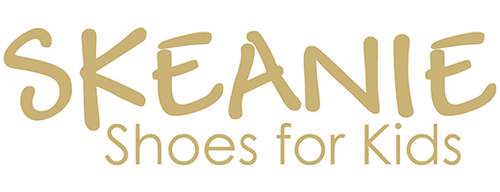Most toddlers are flat-footed when they first start walking, because the bones, muscles and ligaments of their feet are underdeveloped. Toddlers should go barefoot as often as possible to encourage balance, posture and coordination.
Children and wearing shoes
A child learning to walk receives important sensory information from the soles of their feet touching the ground. Footwear helps to protect their feet from injury and from the heat and the cold.
When toddlers are learning to walk, they should be in bare feet or a soft soled shoe as much as possible so they can feel what they touch with their feet and develop muscle strength.When toddlers have been walking on their own confidently for a period of time, they can progress to a firmer soled shoe.Have your child’s shoes professionally fitted, which should include measuring each foot for length and width. Children’s feet grow very quickly and their shoe size may need updating every few months. Shoes that are too tight can hamper your child’s walking and cause problems, such as ingrown toenails.
Suggestions for children's shoes
Shoes for your toddler should ideally have:
- a comfortable fit in length and width
- plenty of room for the toes
- a flexible, flat sole – check the sole can bend near the toe
- the front of the shoe wider than the heel, to match the natural shape of the foot
- a solid heel counter (part that goes around the back of the heel)
- laces, straps or fasteners to prevent too much movement or slipping of the foot inside the shoe.
Expensive shoes are not always better. Children outgrow their shoes very quickly.
Flat feet in children
The sole of a normally developed foot has an arch, called the medial arch, formed by bones, muscles and ligaments. For the first two years, your child’s feet will look flatter than an adult’s.
Flat feet in infants and young children are normal. Children’s feet are generally flexible and should not be stiff.
As your child masters walking, the ligaments and muscles will strengthen and the fat pads in the arch area won’t be so noticeable. By around six years of age, your child should have normal arches in both feet.
If your child has foot pain, or their feet appear to be making it hard for them to keep up with their peers, see a podiatrist.
Feet that turn inwards
Many toddlers walk ‘pigeon-toed’, with either one or both feet turned inwards (in-toeing). In-toeing can come from the foot, lower leg (tibia) or upper leg (femur).
It is important to see your podiatrist or health professional if your child’s feet are stiff or if their in-toeing is:
- severe
- not improving with age
- affecting one leg, or
- causing tripping in school-aged children.
Feet that turn outwards
Very occasionally, toddlers walk with their feet turned outwards (out-toeing).
In most cases, out-toeing resolves by itself as posture and balance matures. See your podiatrist or health professional if your child’s out-toeing is:
- severe
- affecting one leg, or
- causing pain.
Symptoms of feet problems in children
See your doctor or podiatrist if you are worried about your child’s feet or gait. Problematic symptoms may include:
- abnormally shaped toes
- ingrown toenails (that persist or are painful)
- bunions or other deformities
- stiffness of the foot
- limping
- the child complains of pain while walking, or favours one leg over another when walking
- severe in-toeing or out-toeing
- flat feet that cause pain or limit function
- a sudden change in the way your child walks
- if your child isn’t walking at all by two years of age.
Most toddlers are flat-footed when they first start walking, because the bones, muscles and ligaments of their feet are underdeveloped | Toddlers should go barefoot as often as possible to encourage balance, posture and coordination | See your doctor or podiatrist if you are concerned about your child’s feet or the way they walk (gait).
Source: https://www.betterhealth.vic.gov.au/health/healthyliving/childrens-feet-and-shoes
Author: Better Health Victoria


